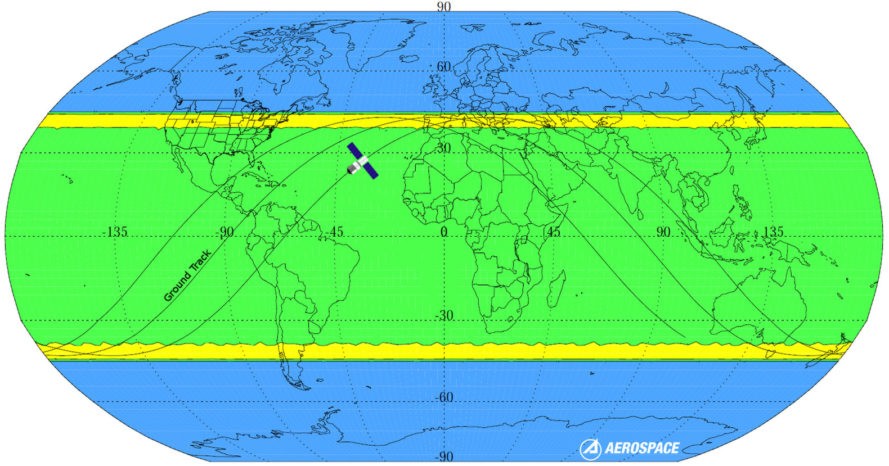 The 7.5 ton, 'Celestial Palace,' will re-enter the Earth’s atmosphere at 26,000 kmph today, Sunday April 1st, before disintegrating into a fireball, or so Chinese aerospace officials hope. (See UPDATE below)
The 7.5 ton, 'Celestial Palace,' will re-enter the Earth’s atmosphere at 26,000 kmph today, Sunday April 1st, before disintegrating into a fireball, or so Chinese aerospace officials hope. (See UPDATE below)The descent of the Chinese space laboratory, Tiangong-1 (Celestial Palace 1), is not expected to cause any damage but should offer a display similar to a meteor shower, if those responsible for the errant object are to be believed.
The European Space Agency estimates that the out-of-control space station will re-enter the Earth's atmosphere between Sunday night and Monday night. The vast potential area along which any debris will fall, includes northern Portugal.
In a statement released on Saturday, the agency explained that the speed of the Tiangong-1 has decreased due to “quieter space weather,” but uncertainty persists as to where the eventual space station will end up.
"People do not have to worry," assured the Chinese Department of Manned Space Engineering on the WeChat social network.
Spaceships of this type "do not fall on Earth violently as in science fiction films," wrote the department representative, adding that, “The probability of a person being hit by a space object of more than 200 grams is one in 700 million.”
Cylindrical, 10.4 meters long by 3.4 meters in diameter and with two, seven metre solar panels, the Chinese space station weighs 7.5 tons.
On March 21, 2016, Chinese authorities informed the United Nations that they had lost control of Tiangong-1. Until that point, the Tiangong-1’s thrusters were regularly fired up to maintain the space station's altitude at between 330 kilometres and 400 kilometres above the earth.
China has been downplaying safety concerns and has tried to persuade an increasingly nervous public that the re-entry will be "a magnificent spectacle."

UPDATE
The space station re-entered Earth’s atmosphere at about 5:16 p.m. Pacific time on Sunday, scattering its remaining pieces over the southern Pacific Ocean, according to the United States’ Joint Force Space Component Command.
The space station re-entered Earth’s atmosphere at about 5:16 p.m. Pacific time on Sunday, scattering its remaining pieces over the southern Pacific Ocean, according to the United States’ Joint Force Space Component Command.
The destructioin of Tiangong-1 became clear when radar stations no longer detected it passing overhead. There were no reports of damage or injuries.
'The station may have landed northwest of Tahiti,' according to a Twitter posting from Jonathan McDowell, an astronomer at the Harvard-Smithsonian Center for Astrophysics.






















